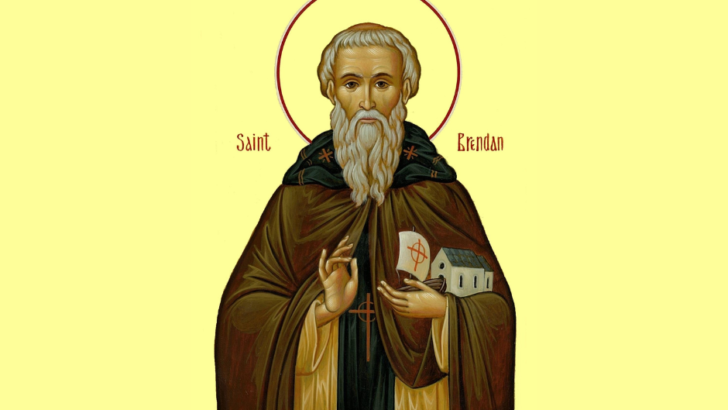When I was an undergraduate, during a Renaissance module, my professor suddenly asked a question that took the class by surprise, “Imagine waking up to the news that a new continent has just been discovered. How would you react? Would you believe it?” It felt absurd, given the world we live in, where satellites map the globe in real time. But the question produced something in me. A reminder that there was a time when people believed there was still so much left to find.
This memory came back to me recently during a visit home to the Canary Islands. I was watching a local history programme about San Borondón island, where they were explaining that, St Brendan the Navigator, an Irish monk from the 6th century, set sail across the Atlantic in search of the ‘Isle of the Blessed’ – a paradise said to be located beyond the edges of the known world. Growing up, the story of San Borondón fascinated us as children. It was an island that appeared and disappeared off the coast of the Canary Islands, always just beyond reach. Local fishermen claimed to have seen it covered in mist, only for it to vanish before they could get close.
Photographed
‘The wandering island of San Borondón has been photographed for the first time’. Said the Spanish newspaper – ABC – headline from August 1958. The image was taken by Manuel Rodríguez Quintero at sunset on that summer day from the island of La Palma. The photograph was given to the archaeologist, Luis Diego Cuscoy, who wrote the article published by ABC.
“San Borondón has been photographed. In front of a small village in the west of La Palma, has emerged a silhouette very similar to the one that was traced in the 16th century… St Brendan left with the same eagerness to find Paradise.”
The association between St Brendan’s Island and the Canaries persisted for centuries, with explorers and sailors claiming to have witnessed the island just beyond the archipelago”
St Brendan’s voyage is one of the great early adventures of Irish monasticism. The Navigatio Sancti Brendani Abbatis, the medieval text that recounts his journey, is full of tales about his encounters with strange creatures and islands during his sail across the Atlantic. Some have even suggested that St Brendan might have reached North America centuries before Columbus. But unlike Columbus’ expedition, in medieval Europe, St Brendan’s journey was a spiritual quest – a search for the Promised Land of the Saints, a paradise reserved for the faithful.
By the late Middle Ages, St Brendan’s Island was placed on maps of the Atlantic, often near the Canary Islands. The association between St Brendan’s Island and the Canaries persisted for centuries, with explorers and sailors claiming to have witnessed the island just beyond the archipelago. However, no one could ever reach it.
San Borondón, the name given to the island in Canarian folklore, became part of the local tradition. Stories of fishermen seeing the island off in the distance only for it to disappear again have been passed down for generations.
Today, the world feels much smaller. Satellites orbit the Earth, and with tools like Google Earth, we can explore nearly every corner of the globe. The oceans, once the greatest mystery, have been mapped. Despite all our technological advances, we are still drawn to the timeless idea of the unknown. San Borondón – St Brendan – remains an important part of Canarian folklore.
Stories like St Brendan’s voyage remind us that there’s always something more. Something beyond what we can see or understand. These myths reflect our need to believe that not everything has been discovered. St Brendan set out not knowing what he would find, driven by Faith and a sense of purpose. In that way, his journey still resonates today. Even though we have technology that can take us anywhere, the human spirit still yearns for what lies beyond what we can witness.
Longing
My professor’s question and the legend of San Borondón speaks to us of the same longing: the search for something beyond the horizon. For St Brendan, that search was for paradise – a glimpse of Heaven on Earth. Today, while we may no longer set sail hoping to discover an island of saints, our desire to discover has not changed. Whether it’s the pursuit of knowledge, adventure or a deeper understanding, that impulse is given to us in the gift of Faith. The legend of San Borondón continues to captivate, not because we still expect to find a vanishing island, but because we still believe that there is always the possibility of something more.
What is faith, after all, if not the conviction that there is something more?


 Renata Milán Morales
Renata Milán Morales
